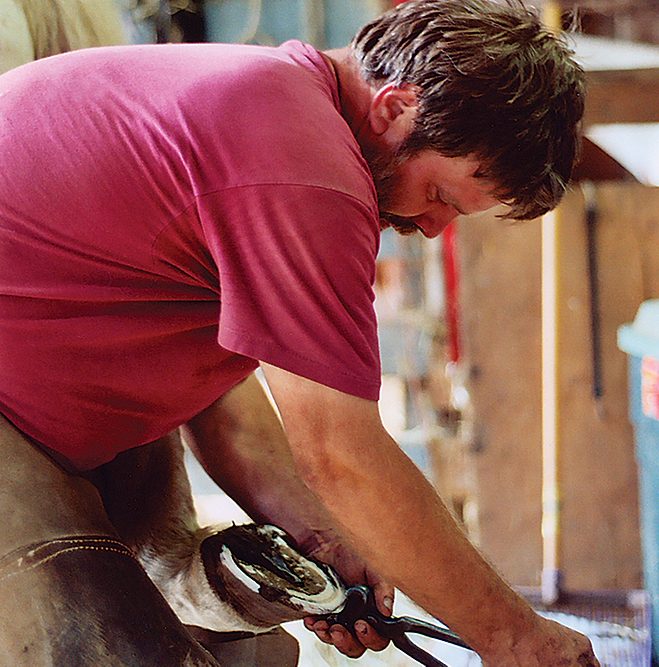American Farriers Journal
American Farriers Journal is the “hands-on” magazine for professional farriers, equine veterinarians and horse care product and service buyers.

HOOF CONCERNS. Horses’ feet are likely to carry tetanus-producing bacteria. Oregon farrier Kevin Carroll says it’s common for farriers to get nicked in the hands when nailing if a horse moves or pulls away. These seemingly harmless cuts and scratches can provide an entryway for bacteria. Farriers should get tetanus shots every 5 years instead of the standard 10, to ensure safety.
Yours can be an unpredictable job. You can be stomped, kicked, struck or thrown to the ground. And that’s just by the horses.
Your own equipment can get you, too. Anvils, forges and nails can present a clear danger. Add to this the scenario that a client’s horse can get hurt during the process.
It makes sense to be ready for an emergency, because there are very few farriers working today who haven’t had at least one. War stories are spooky, but they are good reminders of what can happen.
Dr. Dennis Hatch established his breeding operation, Hatch’s Quarter Horses, in 1982 in Superior, Neb. As both a horseman and a medical doctor who has worked in emergency rooms, he’s well aware of what farriers face on the job. “They can get a myriad of injuries,” he says. Prevention can lessen the risk, but all too often, accidents happen with lightning speed and no warning.
A horse that strikes is one example. “Back feet can hurt you, but the front feet are more dangerous in terms of the kinds of injuries you can get,”…